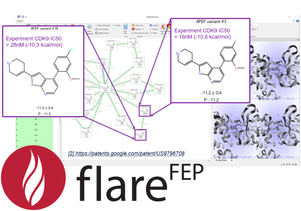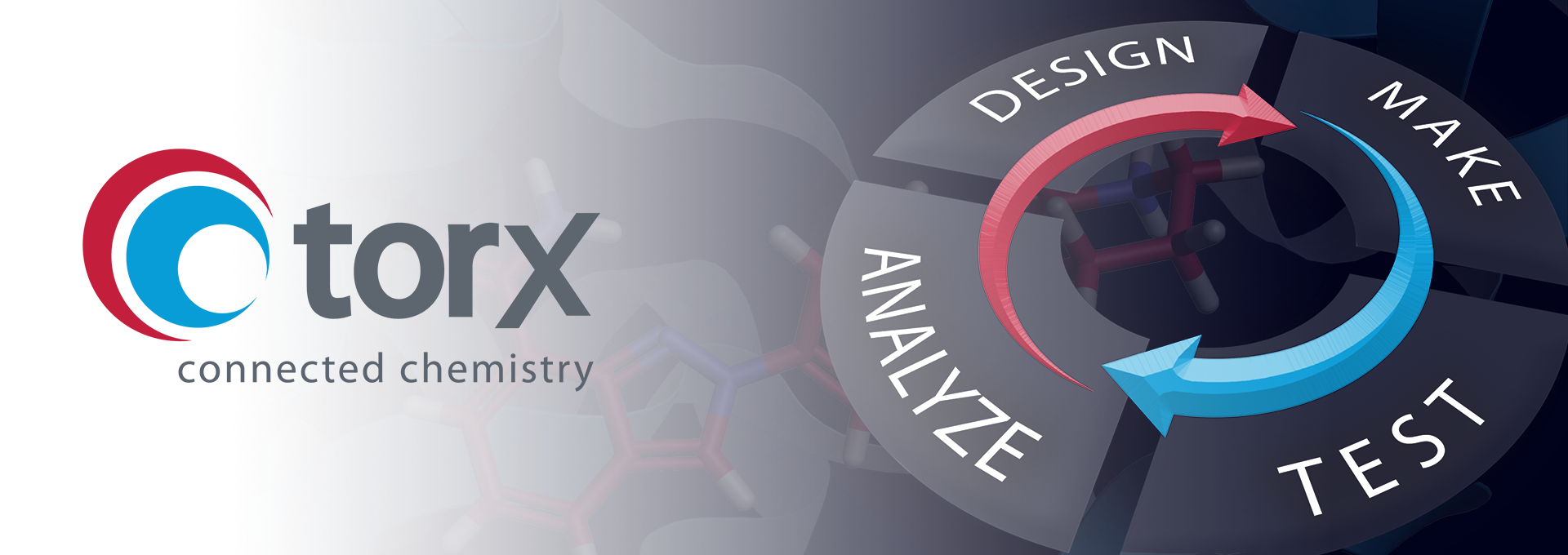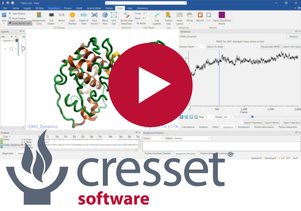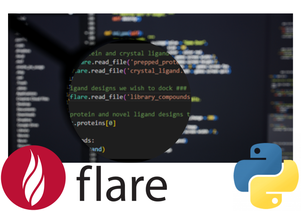March 2024 Newsletter
Welcome to the March Cresset newsletter where we share our latest results for GPCR benchmarks using Flare™ FEP, Cresset wins ...
News
Hello, and welcome to your latest monthly update from Cresset.
We’ve got some very exciting science to share with you this month, focusing on some quite advanced computational chemistry methods. Our main feature is around Flare™ FEP (Free Energy Perturbation): an insightful case study demonstrating how this method can be used to streamline lead discovery and optimization.
Beyond this, we’re also showcasing how those with coding capabilities can benefit from customizable and advanced workflows, within our CADD software platforms.
For the medicinal chemists out there, we haven’t forgotten about you! Below you’ll also find a recent case study showcasing the benefits of our Torx® DMTA platform, which is transforming the way that chemistry teams work together.
As usual, you’ll also find information about our recent and upcoming events and career opportunities. Enjoy!
You can subscribe to our monthly newsletter list if you'd like to receive these monthly updates via email.
 Lead discovery and optimization is a lengthy and expensive process, accompanied by a very high attrition rate. Typically, hundreds of compounds would be synthesized and tested, with huge costs in relation to money, material, and time spent in the lab.
Lead discovery and optimization is a lengthy and expensive process, accompanied by a very high attrition rate. Typically, hundreds of compounds would be synthesized and tested, with huge costs in relation to money, material, and time spent in the lab.
Computational methods can significantly speed up this process and prioritize the best molecules to progress. In our latest case study, written by our FEP Application Scientist, Jennifer Brookes, we demonstrate how the new Hit Expander module in Flare can be used to generate a range of suggestions around a starting hit, which can then be triaged using Flare Free Energy Perturbation (FEP) to retrieve highly active molecules.
The orientation of protein structures is a simple yet essential manipulation in any 3D visualization tool for medicinal and computational chemists. In silico workflows during early-stage hit and lead identification very often rely on clear ligand-protein binding visualizations. When working with ligands in the context of proteins, it is often advantageous to apply the transformation that superimposes two (or more) bound ligands along with their associated protein structures.
In this recent article, Our Application Scientist, Scott Midgley, outlines how the Flare Python API can be used to reorientate proteins, based on an atom-based ligand alignment.
When successfully applied, Free Energy Perturbation (FEP) calculations provide highly reliable and accurate predictions of the strength of the binding interaction between a small molecule ligand and a protein. These powerful insights help prioritize the compounds most likely to succeed, accelerating your discovery project and focusing your valuable chemistry resource.
FEP is a computationally advanced technique and requires specialist expertise to set up, and the necessary infrastructure and computing resources to carry out.
Find out what’s involved in running an FEP project and how Cresset Discovery can support or completely manage your FEP calculations.
 How Torx is supporting drug discovery at a San Francisco-based biotech
How Torx is supporting drug discovery at a San Francisco-based biotechTorx transforms the ways that discovery teams capture and share knowledge, both internally and with CROs. In our recent case study, learn how a biotech, working at the innovative edge of integrating technology and drug discovery has integrated Torx into its workflows.
“By providing immediate, real-time access to design and synthesis information, Torx ensures that we are investing our resources in the most critical compounds.” - Senior Director of Chemistry at San Francisco-based biotech
Request a free evaluation today and see how Torx could transform your DMTA cycle.

In our webinar earlier this month, we demonstrated how Molecular Dynamics and docking in Flare can work in synergy as an advanced research technique. The inherent flexibility of proteins is very often ignored during traditional docking simulations, making it difficult to generate reliable docking poses.
During the session, we presented the case for an ensemble docking workflow, based on multiple protein conformations generated through Molecular Dynamics simulations. Explore how this functionality could support your research, by catching up via our summary article, or requesting the webinar recording.
 Pyflare is a dedicated python binary that provides access to Flare functionalities from within a command line python script.
Pyflare is a dedicated python binary that provides access to Flare functionalities from within a command line python script.
While the Flare GUI can seamlessly run calculations around techniques such as molecular docking and Electrostatic Complementarity™ (EC) analysis on a maximum of 10,000 ligands, the Pyflare command line can extend this capacity into the millions.
In his recent article, our Postdoctoral Scientist, Oliver Hills demonstrates how Pyflare can be used within high-throughput screening, taking the example of a docking and EC hit identification workflow. You’ll learn how to write a python script, which is fully transferable to different drug discovery targets or compound libraries.
 Career Opportunities
Career OpportunitiesInterested in working for a rapidly growing company, focused on helping organizations improve human health by developing better treatments for critical diseases?
Join our dedicated team of like-minded scientists, software developers, commercial specialists, and support staff, across a full variety of vacant roles.
Current open positions include Application Scientist, Senior Web Developer, Discovery Scientist, Postdoctoral Scientist, and Senior Computational Chemistry Developer. Visit our careers page to find out more.
UK-QSAR Spring 2023 Meeting
20 APRIL, 2023 | CAMBRIDGE, UK
Yorkshire Bio-Partnering 2023
25 APRIL, 2023 | BRADFORD, UK
MassBio Align Summit
26 APRIL, 2023 | BOSTON, USA
34th Medicinal Chemistry in Eastern England
27 APRIL, 2023 | HATFIELD, UK
4th Edition of Effervescence
03 - 04 MAY, 2023 | MONTREAL, CANADA
Kinase 2023: 10th SCI/ RSC Symposium on Kinase Inhibitor Design
09 - 10 MAY 2023 | LONDON, UK
2023 Workshop on Free Energy Methods in Drug Design
10 - 12 MAY, 2023 | CAMBRIDGE, USA
Bio-IT World Conference & Expo
16 - 18 MAY, 2023 | BOSTON, USA
Innovations in Crop Protection towards Sustainable Agriculture
18 MAY, 2023 | LONDON, UK
[VIEW OUR UPCOMING EVENTS SCHEDULE]